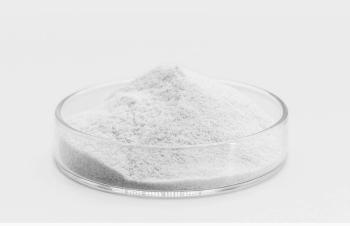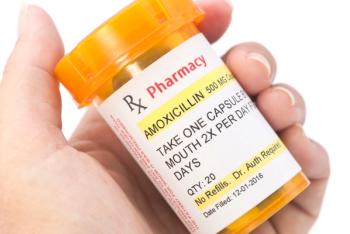
Equipment and Processing Report
- Equipment and Processing Report-01-15-2014
- Volume 0
- Issue 0
2014 Manufacturing Trends and Outlook
A survey of BioPharm International readers found that single-use systems and other technologies are driving process efficiencies in biomanufacturing, but there is room for improvement.
Reprinted from
In a recent survey of current trends and practices in biopharmaceutical manufacturing, BioPharm International readers revealed a preference for disposable systems, identified challenges for different therapies, and suggested technology enhancements to improve process efficiencies (1).
Survey respondents represented research, development, formulation, and process development functions, as well as quality control/assurance, validation, and laboratory management titles at branded and generic-drug companies in the United States, Europe, and Asia. More than half of the respondents work for organizations that produce both small- and large-molecule drugs; 25% added a biopharmaceutical-manufacturing program in the past year.
The responses indicate some signs of manufacturing growth. More than half of all respondents said their companies increased biomanufacturing capacity in 2013. Less than 3% reported a drop in production. Only 8.1% said their companies decreased spending for biopharmaceutical equipment and services in 2013 compared to 2012; 37.8% reported increased spending; spending was flat for 33.8% of respondents. Nearly 40% expect spending to increase in 2014 compared to 2013; only 5.4% expect a decrease.
The top reasons for increased capacity were the addition of new products and increased production of existing products. More than 40% of respondents said that internal development of new products spurred the need for additional capacity. About 20% said capacity was added due to the acquisition of another company or in-licensing of a drug product
Almost 45% of the respondents reported that their organizations manufacture therapeutic monoclonal antibodies (mAbs); more than 55% of those surveyed said they manufacture protein-based drugs other than mAbs. More than 40% of the respondents said their companies manufacture vaccines; 17.7% develop cells for tissue and/or cell therapies; 10.4% manufacture nucleic-acid based drugs.
Challenges: Protein-based drugs. Facilities that manufacture protein-based drugs reported use of multiple purification technologies. Ion-exchange chromatography was the most frequently reported (71.6%) followed by chromatography with other resins (62.7%), chromatography with Protein A (56.7%), and membrane-based filters (53.7%).
Protein stability led the list of reported technical challenges, cited by 53.7% of the respondents. Producing sufficiently high product yields was a close second at 52.2%; purifying high product yields was the third most frequently cited at 49.3%. Protein aggregates, formulation issues, creating/cloning cell lines, regulatory issues, and analytics were mentioned by more than 25% of the respondents (see Table I).
Nucleic-acid based drugs. Although they represented a smaller subset of the respondents, those that manufacture nucleic-acid based drugs reported multiple manufacturing challenges. Purification (reported by 45.5%), stability (36.4%), drug delivery (31.8%), and scale up (27.3%) led the list (see Table I).
Cells for tissue or cell-based therapies. Process development for cells for tissue- or cell-based therapies created technical challenges for half of the respondents. Scale up (35.7%), cell viability (31%), and cell stability (28.6%) were also listed as top technical issues. Regulatory issues, costs, analytics, and inadequate bioreactor volumes were other challenges (see Table I).
Process analytical technologies
More than half of the respondents reported using process analytical technology (PAT) in manufacturing operations. High-performance liquid chromatography was the clear leader, used by 71.7% of those that implement PAT. Use of Fourier transform infrared spectroscopy was reported by 41.3%; almost one-third use near-infrared spectroscopy. More than one-quarter use disposable sensors
Hybrid equipment dominates
Hybrid manufacturing systems, which feature traditional stainless steel and disposable, single-use equipment, were used by almost three-quarters (74.4%) of the respondents; 16.3% use all stainless; 9.5% use all disposable.
All respondents, those who used and did not use disposables, shared perceptions about the value of single-use systems. Nearly 70% cited reduced contamination as an advantage. Time savings, ease of use, and flexibility for multiproduct manufacturing were identified as advantages by more that half of the respondents (Figure 1). While 38.1% said disposables offered cost savings, 55.6% said high cost was a challenge to using a disposable system. Other challenges were limitations on size and leaching of the disposable material into the product (Figure 2).
Quality by Design
Improved process understanding (68.4%), improved product quality (66.7%), and reduced variability in product quality (57.9%) were the top advantages identified by the respondents who have implemented quality-by-design (QbD) principles in their biopharmaceutical manufacturing operations. Nearly half reported improved manufacturing efficiency as a result. However, almost 32% of the respondents have not implemented QbD. Reasons cited for not implementing QbD include a lack of guidance and direction from regulatory agencies (46.2%), no process or quality advantage to be gained (30.8%), a lack of understanding of the QbD initiative (23.2%), or it is too costly.
Past and future innovation
Respondents revealed insight about recent innovations that have improved process efficiencies. Equipment and products related to disposable systems were most frequently mentioned.
There is, however, room for improvement. Better disposable systems, including bags that do not leak, reduced leaching, larger bioreactors and fermenters, and disposable sensors were identified as desired new technologies to improve process efficiencies. Better filtration, chromatography columns, automation, and process analytical technologies also were identified as ways to improve manufacturing efficiencies.
an Alternative:
Outsourced Manufacturing
Outsourced manufacturing plays a prominent role among the companies represented in the survey. Almost 40% reported outsourcing of some component of biopharmaceutical manufacturing. Leading outsourced function, are drug substance manufacturing, API and finished products manufacturing, and clinical trial-materials manufacturing. More than one-third of the companies outsource full-scale commercial manufacturing. Limited internal manufacturing capabilities and cost-effectiveness were the leading reasons cited for outsourcing different functions in biopharmaceutical manufacturing.
Reference
1. BioPharm International Manufacturing Trends 2014 Survey.
Articles in this issue
almost 12 years ago
Volkmann Introduces Low-Profile Pneumatic Conveyoralmost 12 years ago
Accelrys Materials Studio Enhances Modeling and Simulationalmost 12 years ago
Selecting Single-Use Systems for Biopharmaceutical Manufacturingalmost 12 years ago
Preparing for Serialization: A Q&A with Packaging Coordinators, Inc.Newsletter
Get the essential updates shaping the future of pharma manufacturing and compliance—subscribe today to Pharmaceutical Technology and never miss a breakthrough.





